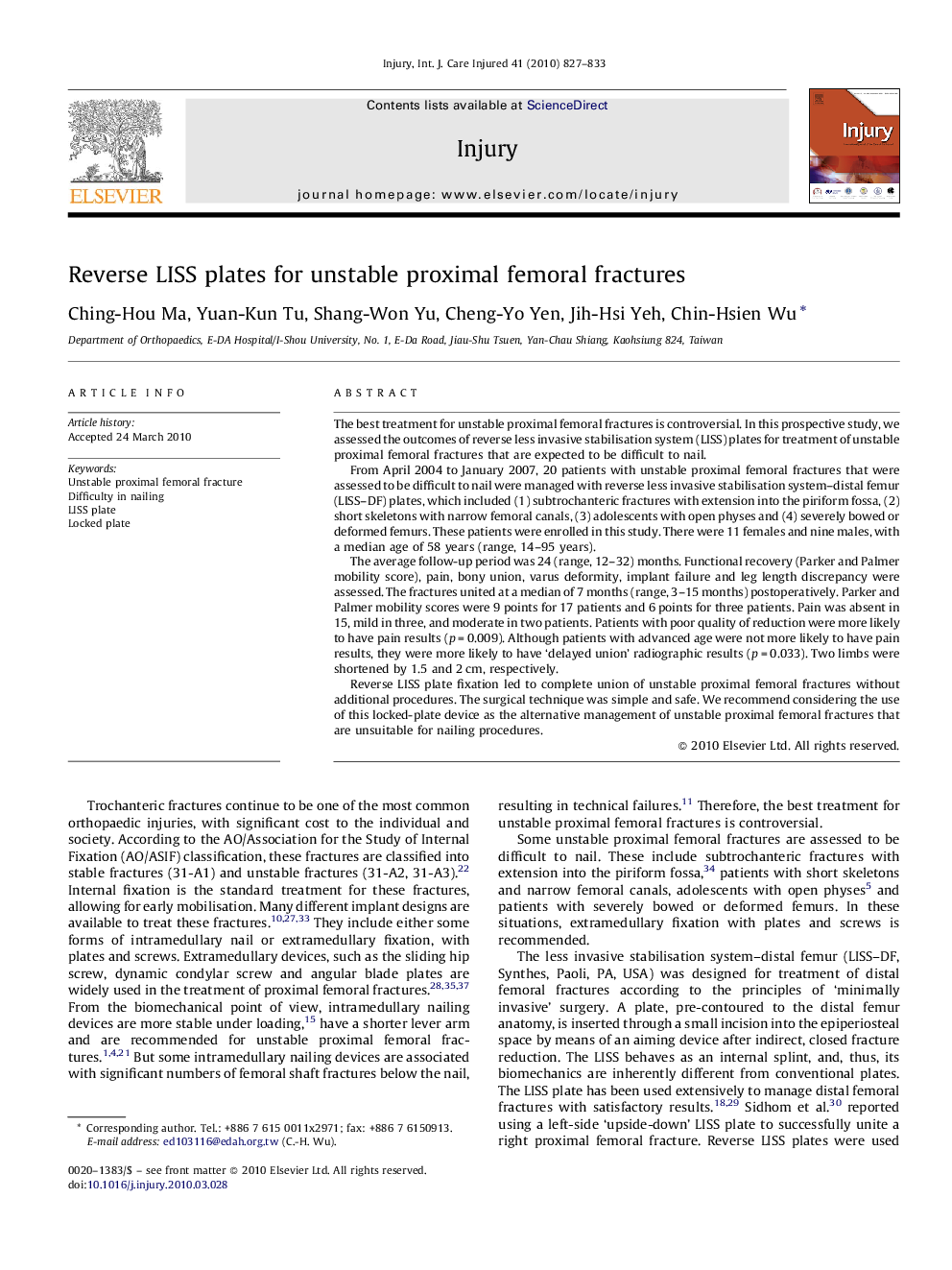| کد مقاله | کد نشریه | سال انتشار | مقاله انگلیسی | نسخه تمام متن |
|---|---|---|---|---|
| 3241663 | 1206086 | 2010 | 7 صفحه PDF | دانلود رایگان |

The best treatment for unstable proximal femoral fractures is controversial. In this prospective study, we assessed the outcomes of reverse less invasive stabilisation system (LISS) plates for treatment of unstable proximal femoral fractures that are expected to be difficult to nail.From April 2004 to January 2007, 20 patients with unstable proximal femoral fractures that were assessed to be difficult to nail were managed with reverse less invasive stabilisation system–distal femur (LISS–DF) plates, which included (1) subtrochanteric fractures with extension into the piriform fossa, (2) short skeletons with narrow femoral canals, (3) adolescents with open physes and (4) severely bowed or deformed femurs. These patients were enrolled in this study. There were 11 females and nine males, with a median age of 58 years (range, 14–95 years).The average follow-up period was 24 (range, 12–32) months. Functional recovery (Parker and Palmer mobility score), pain, bony union, varus deformity, implant failure and leg length discrepancy were assessed. The fractures united at a median of 7 months (range, 3–15 months) postoperatively. Parker and Palmer mobility scores were 9 points for 17 patients and 6 points for three patients. Pain was absent in 15, mild in three, and moderate in two patients. Patients with poor quality of reduction were more likely to have pain results (p = 0.009). Although patients with advanced age were not more likely to have pain results, they were more likely to have ‘delayed union’ radiographic results (p = 0.033). Two limbs were shortened by 1.5 and 2 cm, respectively.Reverse LISS plate fixation led to complete union of unstable proximal femoral fractures without additional procedures. The surgical technique was simple and safe. We recommend considering the use of this locked-plate device as the alternative management of unstable proximal femoral fractures that are unsuitable for nailing procedures.
Journal: Injury - Volume 41, Issue 8, August 2010, Pages 827–833